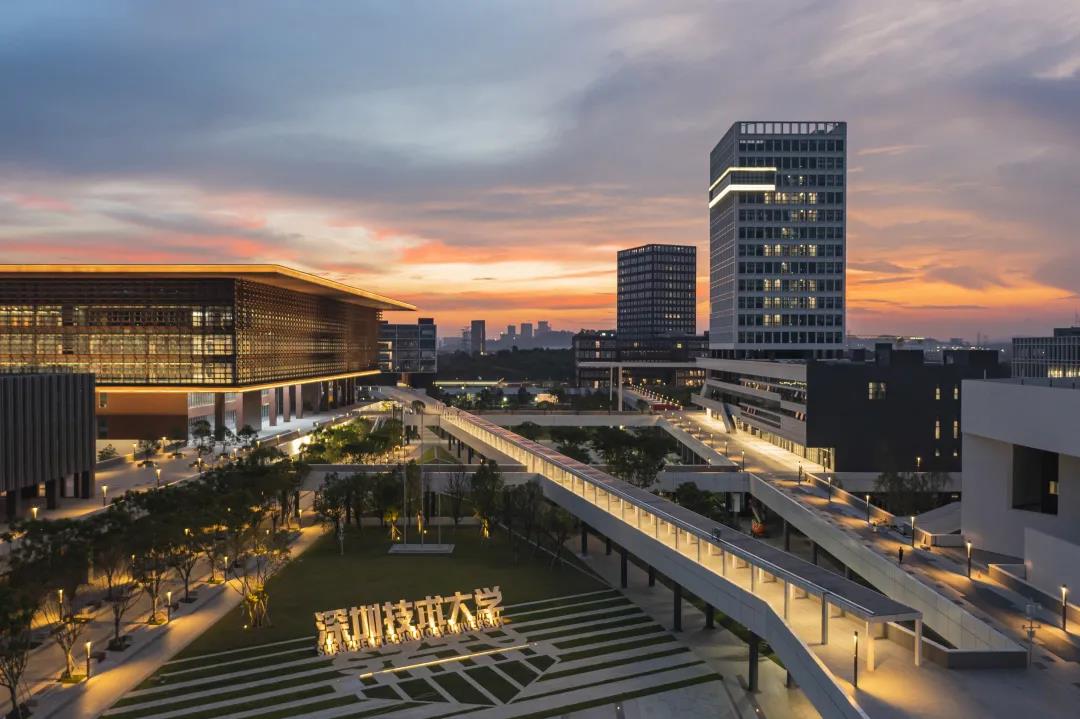Shenzhen Technology University (SZTU) is a public university of applied sciences established by Guangdong Province and Shenzhen Municipality since 2016 with a sound beginning and high standards. Its establishment was officially approved by the Ministry of Education of the People’s Republic of China on November 30, 2018 with identification code 4144014655. In the past seven years, SZTU has been developing in an innovative, enterprising and pragmatic way. Let’s find out its features and highlights together.
1. Striving to build into a first-class university of applied sciences
To build into an international, high-level and exemplary university, SZTU upholds application-oriented philosophy and “seeking truth, pursuing excellence” spirit, and is committed to cultivate quality talents of applied sciences such as engineers and designers with global vision, craftsman’s spirit and innovation capacity.

Nightscape of SZTU campus [Photo/Party Affairs Committee Publicity Office]
Since its formal establishment, SZTU also keeps developing applied education to meet the requirements of the major development strategy and in-depth educational reform of China, as well as exploring ways to address the shortage of high-level innovative applied talents and optimize the higher education structure in Guangdong Province and Shenzhen Municipality.
2. Establishing a diversified subject system
SZTU has set up a comprehensive and well-coordinated subject system with engineering as its core and been optimizing its layout.
In order to keep abreast of the subject system of world’s leading universities of applied sciences, SZTU has been promoting international cooperation in scientific research and talent training. For example, SZTU has set up an overseas laboratory and six joint laboratories in cooperation with German universities, opened a joint PhD program with University of Rennes 1, and established Swiss Innovation Centre Shenzhen with eight Swiss universities.

The opening ceremony of Swiss Innovation Centre Shenzhen [Photo/Party Affairs Committee Publicity Office]
Besides, to link with the strategic pillar and emerging industrial clusters in Shenzhen, SZTU has developed strong subjects and featured majors in related fields. For example, as three major disciplines of SZTU, Optical Engineering, Internet of Things Engineering, and Integrated Circuit Science and Engineering are listed into the key disciplines of Guangdong Province. SZTU is also selected into the higher education institution upgrade plan of Guangdong Province. Moreover, it has joined hands with Huawei to build the College of Future Technology for integrating talent training with the industrial chain.
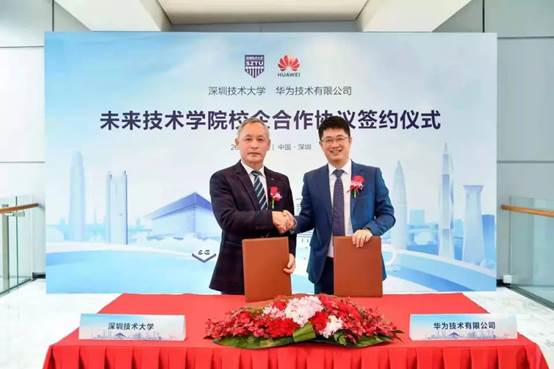
Representatives from SZTU and Huawei sign the agreement on jointly building the College of Future Technology. [Photo/Party Affairs Committee Publicity Office]
Currently, SZTU has set up 15 colleges with 30 undergraduate majors based on industrial demand and university development needs. The affiliated colleges and schools include Sino-German College of Intelligent Manufacturing, College of Big Data and Internet, College of New Materials and New Energies, College of Integrated Circuits and Optoelectronic Chips, College of Urban Transportation and Logistics, College of Health Science and Environmental Engineering, College of Design and Innovation, Business School, Quality and Standards Academy, College of Engineering Physics, College of Sport and Art, School of Foreign Languages, Julong College, College of Pharmacy, School of Marxism.

College buildings at SZTU [Photo/Party Affairs Committee Publicity Office]
3. Recruiting high-level talents from worldwide
SZTU has formed a well-structured, high-level and international faculty team led by academicians, top applied talents of national level, technical elites from enterprises and overseas returnees. There are over 400 full-time teaching staff, including 91 professors, 130 associate professors and 146 assistant professors, 261 of which are high-caliber talents at or above municipal level. Academic leaders for colleges are universally acknowledged national high-level talents. Besides, 47% of them have overseas study or work experience and nearly 40% own doctoral degrees and over 5-year technical work experience in enterprises.
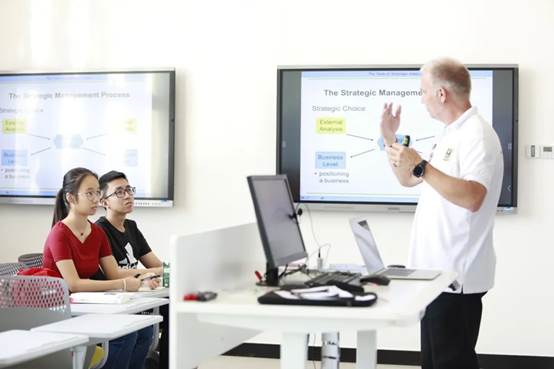
International teacher at SZTU [Photo/Party Affairs Committee Publicity Office]
4. Exploring talent training mode
Since SZTU started independent student recruitment in 2019, the recruitment scope has been widened, with the number of enrolled students, majors and admission score increasing. In 2022, SZTU has opened 30 undergraduate majors and enrolled 3,997 students from 19 provinces, and the total number of registered students has reached nearly 10,000.
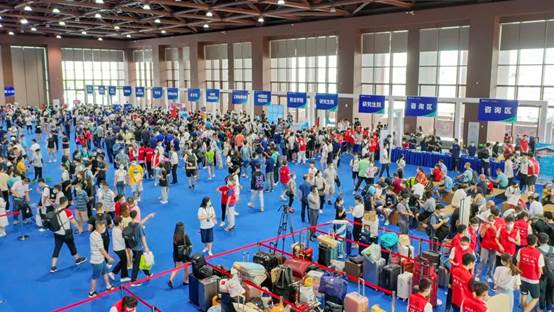
New students register at SZTU [Photo/Party Affairs Committee Publicity Office]
The courses offered at SZTU consist of five categories: general education courses, core courses, technical courses, skill practice courses and international courses. The credits of practice courses account for over 60% of the total, and a practice-oriented teaching system is formed which encourages practice in experiments, internships, projects and competitions.
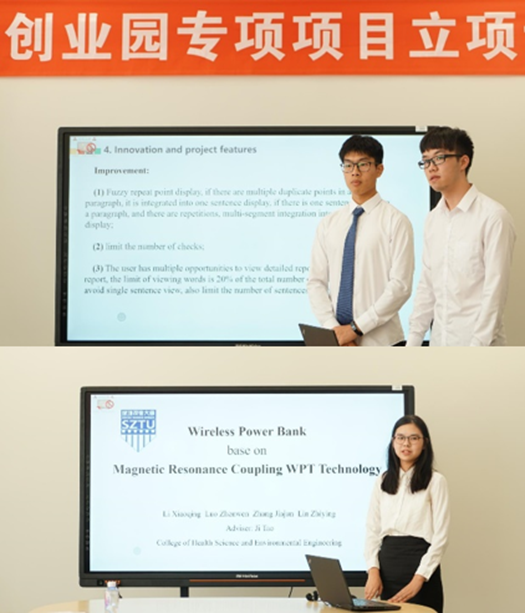
SZTU Student Innovation Park projects [Photo/Party Affairs Committee Publicity Office]
So far, SZTU has funded 136 student start-up projects with 17.44 million RMB, the areas of which include education, culture, information technology, medical apparatus and mechanical manufacturing. Through the projects, SZTU students have applied for 80 patents and 26 start-ups have been incubated at the Student Innovation Park. From 2020 to 2022, students from SZTU have won awards in provincial competitions or above for more than 500 times.
5. A unique “University in the Air” with beautiful scenery
SZTU is located in Pingshan District of Shenzhen with a beautiful natural environment. Its total area under first-stage construction is 594,000 m2 with a floor area of 970,000 m2.
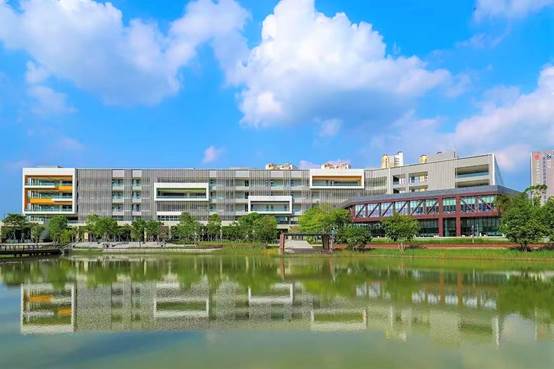
Buildings alongside a lake on campus [Photo/Party Affairs Committee Publicity Office]
The public teaching building has a floor area of about 52,000 m2 with 220 classrooms, including 16 lecture halls and 50 smart classrooms, able to meet the needs of 19,000 students.
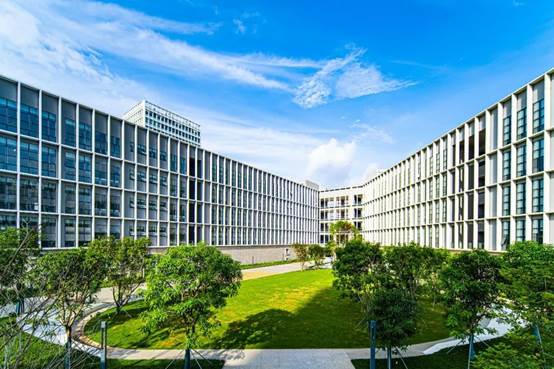
The public teaching building [Photo/Party Affairs Committee Publicity Office]
SZTU Library, whose shape is similar to a mortarboard, has a floor area of about 75,000 m2, which is one of the largest university libraries in China in terms of the floor area.
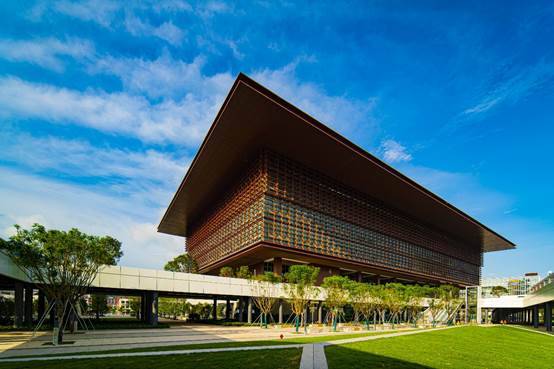
SZTU library [Photo/Party Affairs Committee Publicity Office]
Surrounded by mountains, rivers and wetland parks, the campus is characterized by aerial corridors with ecological landscapes that connect different campus buildings, which makes SZTU a “University in the Air”.
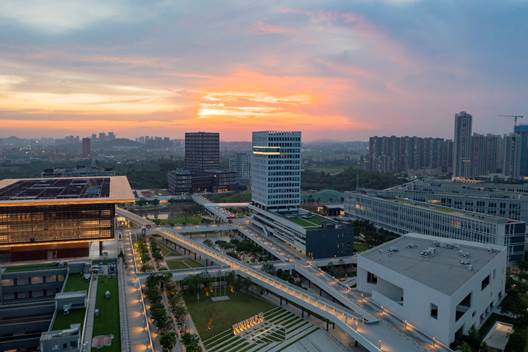
The aerial corridors across the campus [Photo/Party Affairs Committee Publicity Office]
6. Application-oriented research
SZTU fully learns from the experience of German and Swiss universities of applied sciences and closely links with local industries in Shenzhen and the Pearl River Delta. In accordance with the technical needs of enterprises, it attaches importance to the development of university-enterprise cooperation projects and actively promotes talent training through industry-university-research integration. Currently, SZTU has joined hands with many famous enterprises such as Huawei and Tencent to carry out research projects.
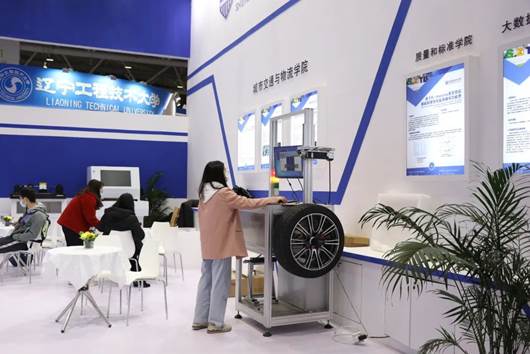
SZTU attends China High-Tech Fair with its scientific research achievements. [Photo/Party Affairs Committee Publicity Office]
Through in-depth cooperation with institutes and enterprises, SZTU has built nine innovative scientific research platforms at provincial and municipal level. It has also hosted and organized multiple large academic conferences to promote scientific research cooperation and exchanges, and launched a high-level comprehensive academic forum called SZTU Forum, which invites famous experts, scholars and entrepreneurs to give speeches on the frontiers of industrial development, key technical issues and novel technology applications. Moreover, SZTU keeps focusing on technological research and maintains high-quality development with advanced research achievements. Many teachers from SZTU have published papers in top academic journals and conferences.
7. Special school-running philosophy featuring openness and integration
SZTU keeps running the university openly to promote integration and innovation. To carry out its internationalization strategy, it introduces quality resources of application-oriented education from overseas such as high-caliber teachers, mature professional standards, and advanced courses and teaching materials. It also cooperates with overseas universities to develop new courses and majors as well as build laboratories and training bases.
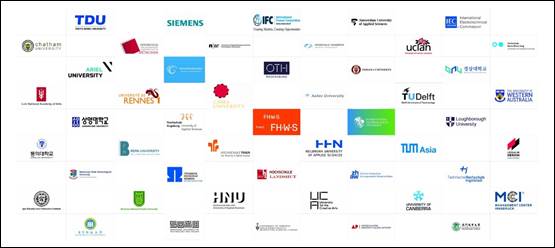
Some of the international partners of SZTU [Photo/International Cooperation & Student Affairs Office]
Up to now, SZTU has signed cooperation agreements with 69 overseas universities, institutions and enterprises from 17 countries and regions, built six joint laboratories with international partners, and sent 311 students in 17 batches abroad for exchanges.
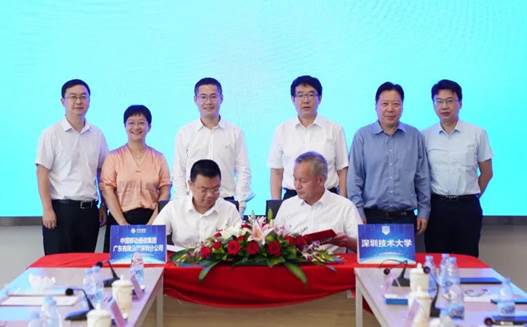
SZTU signs strategic cooperation agreement with China Mobile and unveils Laboratory of 5G IoT Communication and Industry Application [Photo/Party Affairs Committee Publicity Office]
In addition, to achieve industry-education integration, SZTU takes full advantage of strong local industries and explores ways to grow in line with regional development and cooperate with high-tech enterprises for win-win development and innovation. So far, it has signed cooperation agreements with over 230 well-known enterprises, carried out 151 joint projects, built 12 joint laboratories, and set up 40 internship and training bases.

The unveiling ceremony of SZTU Industrialization Center of Technological Achievements [Photo/Party Affairs Committee Publicity Office]
On July 11, 2020, SZTU Industrialization Center of Technological Achievements was unveiled, which is striving to explore a diversified investment mechanism to commercialize and industrialize technological achievements, and to form a transformation chain that integrates fundamental research, technological development, achievement transformation and financial support. As a result, it will continue to steadily support the scientific research personnel to carry out follow-up scientific research and make the achievements industrialized.
8. Striving to boost the industrial development of society
All scientific research platforms of SZTU are open to the society. For example, SZTU Research Center for Advanced Materials Testing Technologies is equipped with leading large scientific research facilities and instruments to offer research testing, training and technological development services. Many enterprises such as BYD and TCL carry out a variety of research using the advanced instruments from SZTU. Its research platforms in the fields of transportation and vehicles can provide testing, development and consultation services for related industries as well as traffic management and improvement services for districts in Shenzhen.
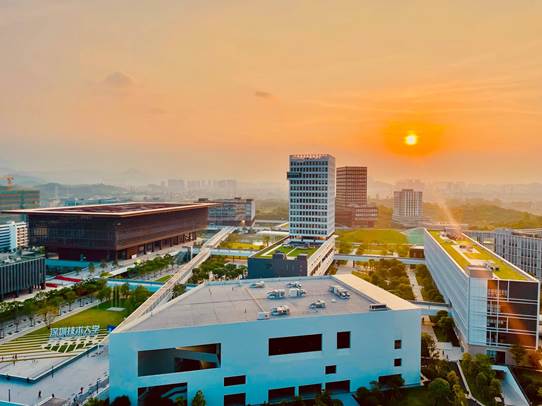
SZTU campus scenery under the sun [Photo/Party Affairs Committee Publicity Office]
Looking to the future, SZTU expects to grow into a high-level university of applied sciences with distinct characteristics in 2025 and promote the mutual support and coordination between disciplinary development and dominant industries of Shenzhen. It will set up more colleges or schools that integrate with industries, establish joint R&D platforms and regional platforms of technical service innovation to meet the needs of enterprises, build a university science park as the technology and start-up incubator, and found an industrial technology innovation alliance in Pingshan District.
Drafted by Olivia(赖丽伟)/ International Cooperation & Student Affairs Office
Revised by International Cooperation & Student Affairs Office
Edited by International Cooperation & Student Affairs Office
